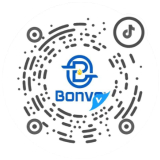The signing of Trump’s "One Big Beautiful Bill" has triggered structural upheaval in the U.S. polyurethane industry. By permanently extending corporate tax cuts and eliminating clean energy subsidies, the bill establishes a fossil fuel-centric industrial logic. Its impact cascades through the supply chain: from fragmented raw material costs and production equipment upgrades to shifting end-demand—culminating in transformative pressures on rotary pumps, critical conveyancing devices for polyurethane production.
Policy fragmentation at the raw material level directly reshapes production. Relaxed oil/gas drilling restrictions increase propane supply, lowering costs for propylene oxide producers and spurring capacity expansion. New production lines drive concentrated demand for high-pressure rotary pumps—mature technologies that remain mainstream. Conversely, MDI/TDI manufacturers, forced by import tariffs on aromatics to adopt heavier alternative feedstocks, face surging viscosity and corrosion. Frequent seal failures and rotor wear in conventional pumps compel switches to corrosion-resistant materials (e.g., ceramic-coated rotors) with integrated temperature control. Policy-driven feedstock disparities are now translating into a cost divide in production equipment.
Tax incentives become key catalysts for equipment renewal. Accelerated depreciation policies significantly boost investment. Three rotary pump types dominate polyurethane lines: raw material transfer pumps (requiring stable flow control), precision feed pumps (high-pressure/high-accuracy), and waste recovery pumps (chemical-resistant). Suppliers report surging orders from polyether plants. Yet hidden risks emerge: canceled clean energy subsidies delay grid modernization, pushing electricity costs upward and elevating energy expenses for rotary pumps. Manufacturers adopt high-efficiency models (e.g., permanent magnet motor pumps), while cash-strapped SMEs delay upgrades—increasing leakage risks and environmental penalties.
Structural demand shifts permeate equipment markets. Federal subsidy cancellations devastate building insulation, shrinking demand for polyurethane spray foam and directly impacting metering pump rentals in construction. Equipment suppliers face severe inventory pressure, slashing traditional pump capacity. Infrastructure investment emerges as the sole growth driver: road/port construction boosts polyurethane sealant and industrial coating output, demanding specialty rotary pumps with shear-resistant rotors (for high-viscosity resins) and enhanced seals (for reactive chemicals). R&D resources pivot from construction to industrial pumps.
Rotary pump manufacturers confront dual adaptation challenges. Technologically, modular designs gain urgency to rapidly swap rotor materials for corrosive feedstocks. Strategically, import reliance on core components (precision bearings, specialty ceramics) clashes with trade protectionism, potentially raising local production costs. Some firms explore near-shoring or energy-saving service contracts to lock in clients.
Notably, Chinese pump makers seize unexpected opportunities. U.S. polyurethane producers scrambling for cost-effective corrosion-resistant pumps turn to Chinese alternatives. Domestically manufactured ceramic-coated rotor pumps gain traction in mid-to-low pressure applications, displacing Western brands. However, technical barriers endure: core sealing technologies for high-pressure metering pumps remain foreign-dominated, requiring Chinese firms to break material science bottlenecks for high-end market entry.
This policy-driven restructuring exposes a core contradiction: short-term tax incentives fuel capacity expansion, while feedstock tariffs, energy costs, and demand erosion form long-term constraints. As rotary pumps—the "blood circulation system" of polyurethane production—evolve from general-purpose to corrosion-resistant specialty models, their technological shifts and market realignment (decline in construction/rise in industry) serve as a microcosm of the supply chain’s health. Post-policy boom, the industry’s resilience hinges on whether equipment innovation can outpace systemic risks.
Bonve remains committed to its tenet:"Dedicate heart and soul to perfecting rotary pumps."We provide global clients with customized transfer and mixing solutions.For technical inquiries,product selection,case studies,or collaborations,contact us:
Service Hotline:0574-87588986|13586591794
Official Website:www.bvpumps.com
Business Email:market@bonvepumps.com
Let’s collaborate to advance industrial fluid transfer efficiency and innovation through precision engineering!





















































































